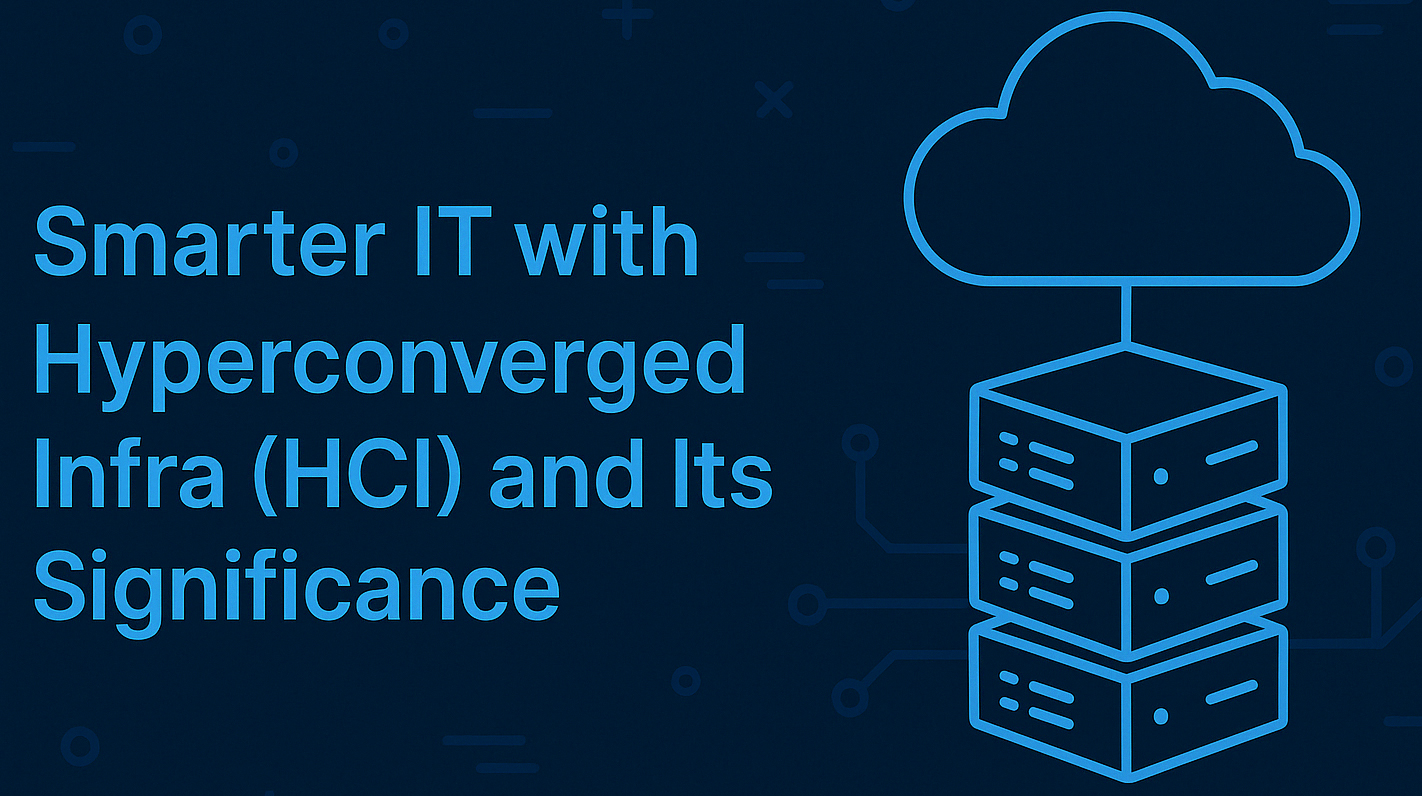 Hyperconverged Infrastructure (HCI) and Its Significance
Hyperconverged Infrastructure (HCI) and Its Significance
As businesses increasingly prioritize agility, scalability, and cost-efficiency in their IT strategies, traditional data center models are rapidly being replaced with more integrated and flexible alternatives. Among these, Hyperconverged Infrastructure (HCI) has emerged as a transformative force in modern IT operations. By converging computing, storage, and networking into a single, software-defined solution, HCI is reshaping how enterprises manage workloads, streamline operations, and plan for future growth.
Understanding Hyperconverged Infrastructure
Hyperconverged Infrastructure is a software-centric architecture that tightly integrates compute, storage, and virtualization resources into a unified system, managed through a centralized platform. Unlike traditional three-tier architectures-which require separate systems and management for servers, storage arrays, and network components-HCI collapses these silos into a single building block, enabling organizations to scale out easily by adding more nodes.
Key components of an HCI solution typically include:
- Virtualization software for compute and storage abstraction.
- Software-defined storage (SDS) to manage data across distributed nodes.
- A hypervisor (such as VMware ESXi, Microsoft Hyper-V, or KVM) to handle virtual machines (VMs).
- Centralized management tools that provide visibility, automation, and orchestration.
By consolidating infrastructure and centralizing control, HCI provides an agile and simplified IT environment, which is particularly beneficial for enterprises navigating complex digital transformation initiatives.
The Strategic Importance of HCI
-
Simplified Management and Operations
One of the primary advantages of HCI is its ability to reduce IT complexity. With traditional infrastructure, managing separate hardware components often requires specialized skills and multiple management interfaces. HCI eliminates this fragmentation by providing a unified management console. IT teams can deploy, manage, and scale resources from a single pane of glass, significantly reducing administrative overhead and human error.
-
Cost Optimization
HCI lowers both capital expenditures (CapEx) and operational expenditures (OpEx). The use of commodity hardware and software-defined technologies reduces the need for expensive proprietary systems. Moreover, by streamlining IT operations and reducing the need for multiple vendors, HCI enables more predictable and manageable costs over time. Organizations also benefit from lower power and cooling requirements due to reduced hardware footprint.
-
Scalability and Flexibility
Unlike traditional infrastructures that require large upfront investments and complex scaling procedures, HCI supports a “scale-out” model. Enterprises can incrementally add nodes to the infrastructure as demand grows, enabling them to align infrastructure investments closely with business needs. This elasticity is particularly useful in dynamic environments like DevOps, analytics workloads, or hybrid cloud deployments.
-
Enhanced Performance and Availability
HCI architectures are designed with performance and high availability in mind. Integrated redundancy, automated failover mechanisms, and data replication across nodes ensure minimal disruption in case of hardware failures. Moreover, the tight integration of storage and compute layers can result in lower latency and higher throughput for mission-critical applications.
-
Support for Hybrid and Multi-Cloud Strategies
Modern HCI platforms are built with cloud integration in mind. They offer seamless interoperability with public cloud providers, allowing organizations to extend their on-premise environments into hybrid or multi-cloud models. This flexibility enables workload portability, data backup to the cloud, and disaster recovery orchestration-critical capabilities for businesses embracing digital transformation.
Use Cases Across Industries
HCI is not a one-size-fits-all solution but has demonstrated value across a wide array of industry verticals:
- Healthcare providers utilize HCI for managing electronic medical records (EMRs), ensuring data availability and regulatory compliance.
- Financial services firms leverage HCI to run high-performance applications with low latency and ensure business continuity.
- Retail businesses deploy HCI in edge environments for managing in-store transactions, inventory systems, and analytics.
- Educational institutions benefit from simplified IT management and remote learning infrastructure supported by HCI platforms.
Challenges and Considerations
While HCI offers compelling benefits, organizations must evaluate certain considerations before adoption:
- Vendor lock-in: Choosing a proprietary HCI platform may limit flexibility in future technology choices.
- Initial investment: Although HCI can reduce long-term costs, the initial investment in new infrastructure and training can be significant.
- Workload compatibility: Some legacy or specialized workloads may not be well-suited for virtualized environments and may require traditional infrastructure.
A thoughtful assessment of application requirements, existing IT landscape, and long-term digital strategy is essential for a successful HCI deployment.
Cut Costs. Boost Efficiency. Optimize Your Cloud Now.
Power your cloud transformation with expert help from actsupport
-
Previous Post
Veeam or Zerto: Smarter Disaster Recovery 2025




